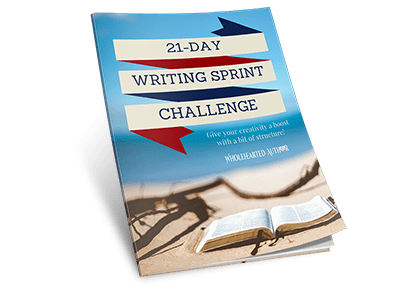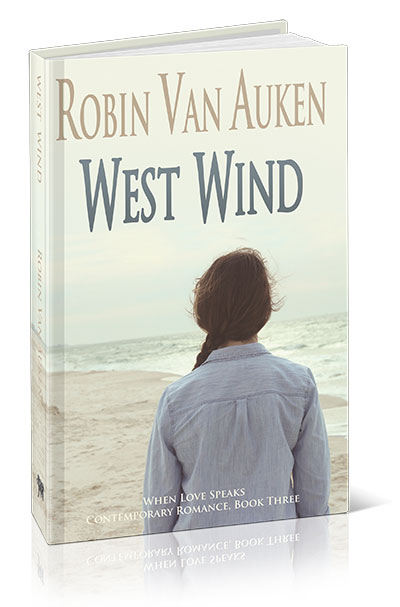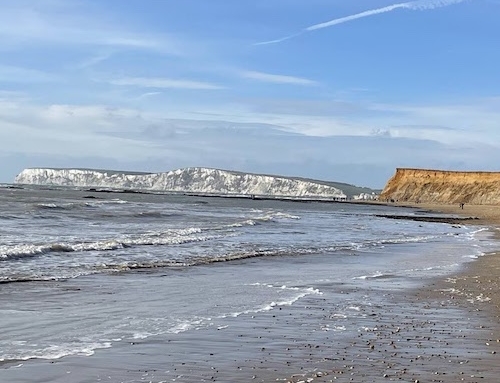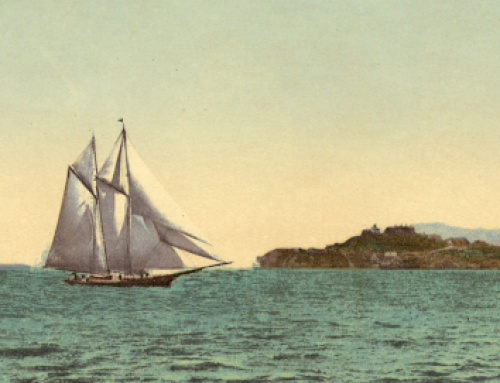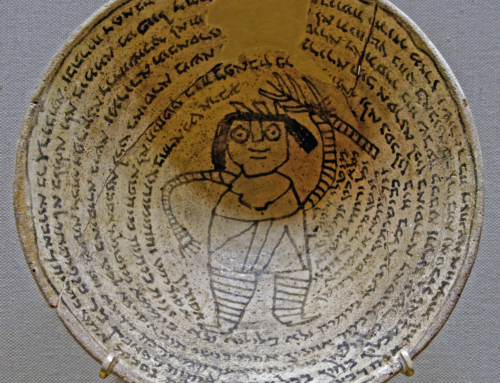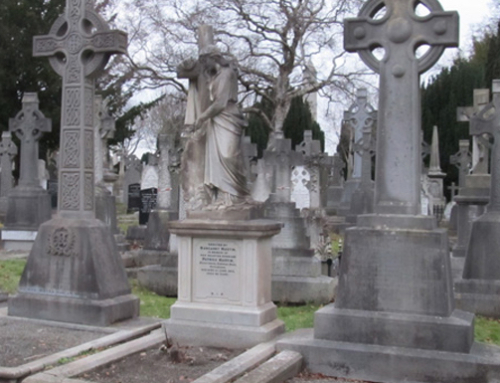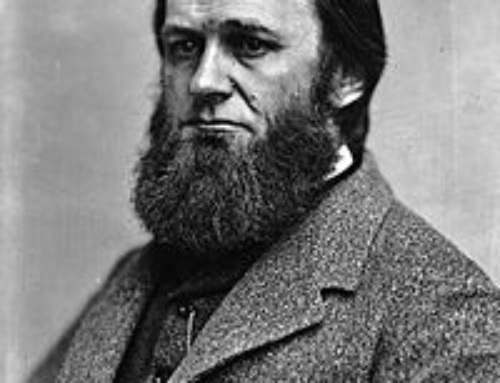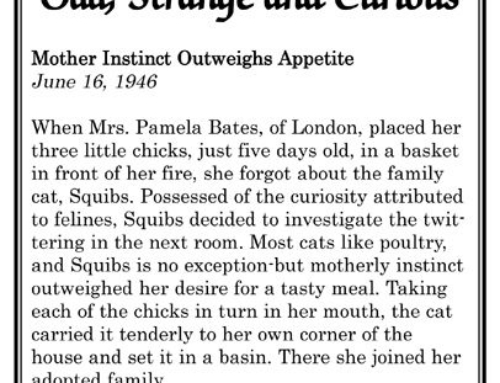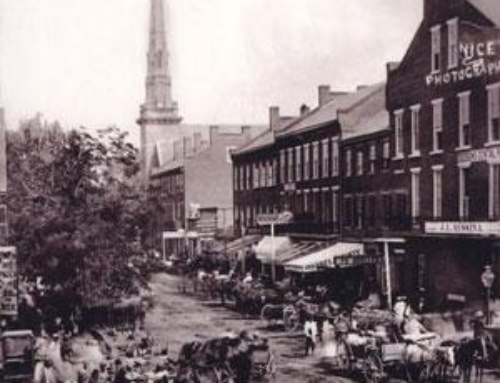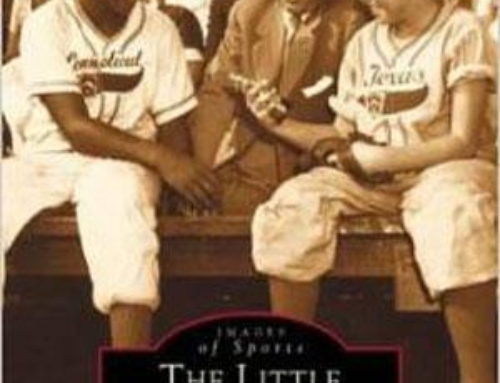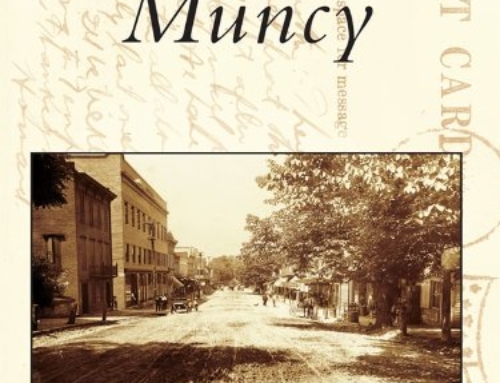Prehistoric American Indians skillfully managed the natural bounty of the Susquehanna River region by living in accordance with the seasons. They hunted, fished, gathered nuts, berries and other wild foods, and they cultivated corn, beans and squash. According to archaeologists, Indians were successful in populating the New World for more than 16,000 years — perhaps as long as 30,000 years.
People of the Susquehanna: Paleo-Indian
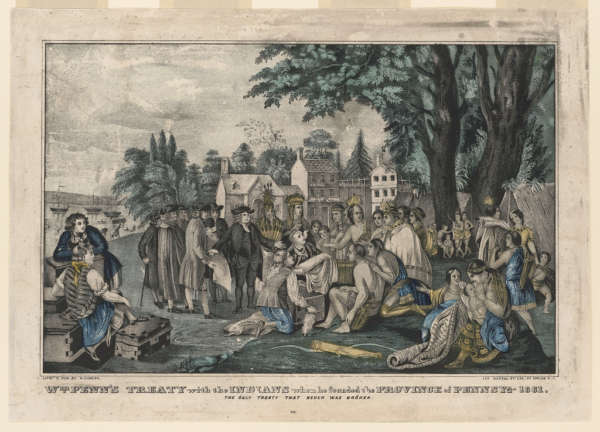
Wm. Penn's treaty with the Indians when he founded the province of Pennsya. 1661: the only treaty that never was broken
Very little is known about the culture of Paleo-Indians, the first inhabitants of the Americas. Most believe they traveled in nomadic bands and crossed Beringia, a land bridge connecting Asia and America during the last glacial advance.
According to Montoursville-based archaeologist Jeff Bohlin, Paleo-Indians probably followed migrating caribou into the Northeast. Archaeologists believe Paleo-Indian territories were wide ranging, Bohlin said, based on their use of exotic stone for spearpoints. Some of the stone came from sources hundreds of miles away.
Among the earliest Paleo-Indian sites in the New World is Pennsylvania's Meadowcroft Rock Shelter, where Dr. James Adovasio discovered stone tools dating 16,000 years. Fluted spearpoints, knives and scrapers were the predominant tools used by the Paleo-Indian.
Archaic
The Paleo-Indian culture gave way to the Archaic — a period that lasted throughout the Susquehanna Valley about 8,000 to 2,000 years ago, according to archaeologist Barry C. Kent, with the state Historical and Museum Commission.
The period is characterized by its many different shapes of knives and spearpoints and by a lack of pottery.
Archaic peoples were hunters, fishers and gatherers of wild plant foods. Spearpoints of similar styles have been found in various sites along the East Coast, Bohlin said, and the presumption is that Archaic people interacted, perhaps even traded. In the Late Archaic period, 1500 B.C., American Indians were forming bowls from soapstone and rhyolite, Bohlin said. Archaeologists believe the use of the stone vessels indicate a transition between the Archaic and Woodland periods.
Woodland
The next major cultural period was the Woodland, marked by the first use of pottery and limited horticulture. Larger and more permanent villages of American Indians were settled and tribal identities developed.
Local avocational archaeologists of North Central Chapter No. 8, Society for Pennsylvania Archaeology, led by James P. Bressler have conducted excavations in the valley for decades and have identified two distinct Woodland occupations along the Susquehanna River: Clemsons Island (800-1200 A.D.) and Shenks Ferry (1200-1500 A.D.). Bressler proposes that the Shenks Ferry American Indians displaced the Clemsons Island band following a large-scale invasion and ensuing conflict. Bohlin agrees with Bressler's conclusion that multiple occupations were present.
"That doesn't always mean there's an extermination," he added.
It is during the late Woodlands stage that the most devastating cultural change occurred for the American Indian — contact with Europeans.
When discovered by Europeans, Pennsylvania, like the rest of the continent, was inhabited by groups of American Indians reflecting a Stone Age background, especially in material arts and crafts.
Tools, weapons and household equipment were made from stone, wood and bark. Transportation was on foot or by canoe.
Houses were made of bark and clothing from the skins of animals. The rudiments of a more complex civilization were at hand in the arts of weaving, pottery and agriculture, although hunting and food-gathering prevailed.
Along the West Branch of the Susquehanna River lived the Susquehannock people. The late Dr. Paul A.W. Wallace of Lebanon Valley College believed the tribe was an offshoot of the Iroquois. Wallace examines the life of the American Indians in his popular history "Indians in Pennsylvania."
The Susquehannocks were a powerful Iroquoian-speaking tribe who lived along the Susquehanna River in Pennsylvania and Maryland. Living in Algonkian-speaking tribes' territory, they engaged in many wars.
In the end, they were victimized by new diseases brought by European settlers and attacks by Marylanders. The Iroquois destroyed them as a nation by 1675. A few descendants were among the Conestoga American Indians who were massacred in 1763 in Lancaster County.
Another large linguistic group in Pennsylvania was the Algonkian, represented by the Delawares, Shawnees and other tribes.
The Delawares, calling themselves Leni-Lenape or "real people," originally occupied the basin of the Delaware River and were the most important of several tribes that spoke an Algonkian language.
Under the pressure of white settlement, they began to drift westward to the Wyoming Valley, to the Allegheny and, finally, to eastern Ohio.
By Robin Van Auken, Williamsport Sun-Gazette
Ready for a Challenge?
Have even more fun when you accept the 21-Day Writing Sprint Challenge. This process is one I use every semester with my college students, so I know it can kickstart your creativity and introduce structure to your writing schedule. When you join my Circle of Writers & Authors, you'll receive FREE writing resources, and you'll sign up for my newsletter. I will not sell your information, or spam you. I will send you updates about new articles and podcasts I've created, and projects I'm working on. You can unsubscribe at anytime. Read my Privacy Policy here.
Wholehearted Author is for you if you are …
- Starting out as a writer and could use some guidance
- Wanting to be inspired to create and publish your book
- Looking for like-minded, happy people and helpful mentors
- Hoping to turn your writing into a full-time, awesome career
- New to the concept of "permission marketing" but willing to try
CATCH THE WEST WIND
Add WEST WIND to your library!
If you love a good mystery, a romantic whodunit that will surprise you, then WEST WIND is a great addition to your ebook library.
West Wind is my third novel as an author of Contemporary Fiction, Suspense, Thriller, and Romance. It's FREE too, when you join my exclusive Readers Group. Join today and download your free book, and as a special thank you, you'll receive a SECOND FREE BOOK tomorrow! The giving goes on and on when you become my fan.
When you join my Readers Group, you'll receive updates about new projects I'm working on. You can unsubscribe at anytime. Read my Privacy Policy here.


